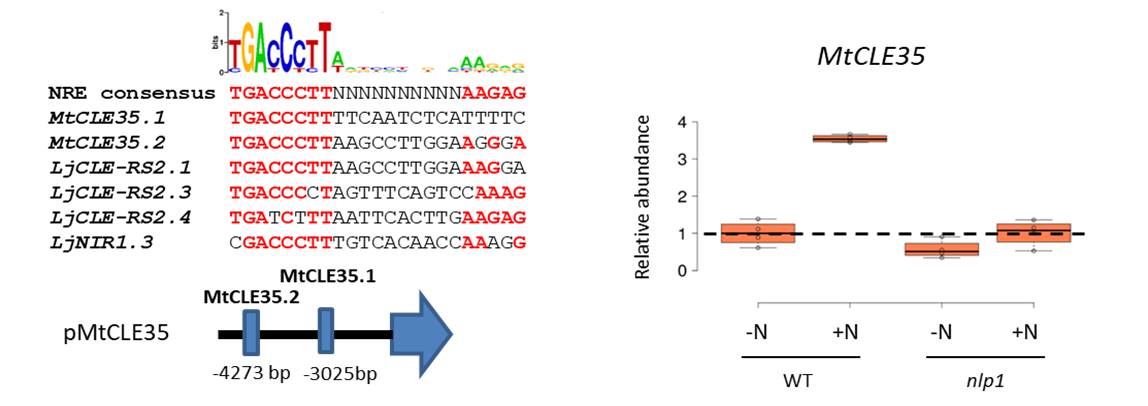Finally! A CLE peptide regulating symbiotic nodulation that is induced by nitrate in M. truncatula
The nitrate-induced CLE35 signaling peptide inhibits nodulation through the SUNN receptor and miR2111 repression
Legume plants form nitrogen (N)-fixing symbiotic nodules when mineral N is limiting in soils. As N fixation is energetically costly compared to mineral N acquisition, these N sources, and in particular nitrate, inhibit nodule formation and N fixation. In a new study from the Frugier team at IPS2, published by Moreau et al. in Plant Physiology, a CLAVATA3-like (CLE) signaling peptide, MtCLE35, was identified in the model legume Medicago truncatula as induced locally by high-N environments dependent on the Nodule Inception-Like Protein (NLP) MtNLP1 transcription factor. MtCLE35 inhibits nodule formation by affecting rhizobial infections, depending on the Super Numeric Nodules (MtSUNN) receptor. In addition, high N levels or the ectopic expression of MtCLE35 represses the expression and accumulation of the miR2111 shoot-to-root systemic effector, thus inhibiting its positive effect on nodulation. Conversely, ectopic expression of miR2111 or downregulation of MtCLE35 by RNA interference increased miR2111 accumulation independently of the N environment, and thus partially bypasses the nodulation inhibitory action of nitrate. Overall, these results demonstrate that the MtNLP1-dependent, N-induced MtCLE35 signaling peptide acts through the MtSUNN receptor and the miR2111 systemic effector to inhibit nodulation.

